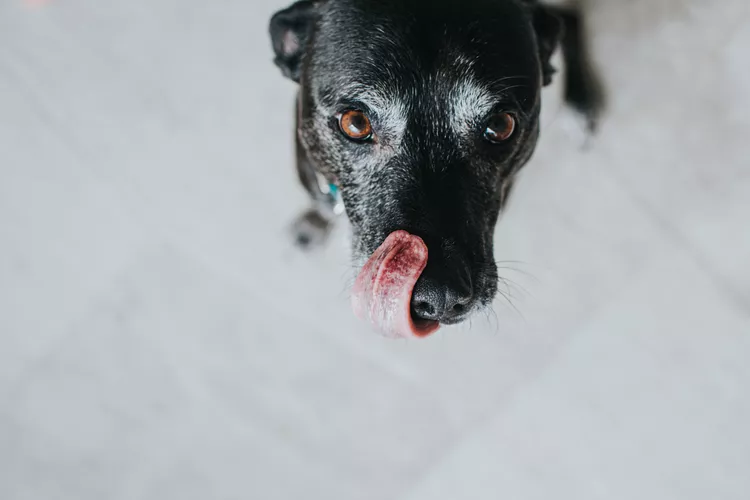Can Dogs Eat Raw Chicken Feet?

Many pet stores stock raw or dehydrated treats for dogs, including chicken feet. Some companies tout the health benefits of chicken feet, including dental and joint health benefits. But can dogs eat chicken feet safely? What should you know before giving your dog one to munch on?
Can Dogs Eat Raw Chicken Feet?
Proponents of chicken feet for dogs say that because chicken feet are full of glucosamine and chondroitin, they can be a great, nutritious snack for older and aging dogs. In fact, supplementing an elderly dog with glucosamine and chondroitin can help soothe achy joints. Proponents of feeding dogs raw chicken feet also state that, because chicken feet are
mostly bones and ligaments, they also make great dental treats as the crunchy bones and connective tissues can help break up any tartar on the teeth. However, the fact remains that it's still raw chicken. The biggest risk of feeding your dog a raw diet or raw treats is the risk of parasites and bacteria. Studies show that between 20-48% of raw meat based diets tested were contaminated with Salmonella and 18 of the Salmonella strains found were resistant to 12 of the 16 antibiotics there were tested against. In another, small study, 80% of tested homemade raw chicken diets tested positive for Salmonella and 30% of the stools tested were also positive.
Raw chicken, however, doesn't just carry a risk of Salmonellosis. It can be contaminated with other types of bacteria as well. Chicken sold in stores and meant for human consumption has been shown to test positive for Campylobacter at a rate of 29% to 74% and Listeria at a rate of 15% to 34%. With that in mind, chicken feet from the butcher shop may not be the safest option.
What About Cooked Chicken Feet?
If there are risks of bacterial infection with feeding raw chicken feet does cooking the chicken feet make them safer? Unfortunately, cooking chicken feet probably only makes them more dangerous for your dog. This is because of all the bones within the feet that contribute to the claims of joint and teeth benefits. When chicken bones are cooked they become incredibly brittle and can splinter easily. Splintered bits of chicken bone can be as sharp as a scalpel blade and can easily perforate a dog's gastrointestinal tract. This can lead to life threatening peritonitis and sepsis. The process of dehydrating meats into jerky type treats does involve keeping the meat at a temperature between 130 degrees Fahrenheit and 140 degrees Fahrenheit throughout the process to prevent bacterial contamination. Subjecting chicken feet to these temperatures for the time it takes to dehydrate them may be enough to turn the bones brittle, so dehydrated chicken feet treats, whether store-bought or homemade, may not be safe.
What About Other Raw Animal Products?
Chicken feet aren't the only raw treats at boutique pet shops. Some stores even have a raw bar, where you can help yourself to bulk bins of raw chicken hearts, duck hearts, bully sticks, chicken and duck necks, etc. Most of these are freeze dried, but you might want to contact the manufacturer to check if the label at the store doesn't make it obvious.
Dehydrating meats has been long used to make jerky for people and in recent years more people have been dehydrating meats to make jerky for their pets. The process of dehydrating removes all water from the meat, which prevents bacteria from proliferating, but dehydrating by itself doesn't always kill any bacteria already present in the meat.
The current USDA recommendation for jerky is to first freeze the raw meat for up to three days, thaw in the refrigerator, and then heat it to 160 degrees Fahrenheit, either by steaming or roasting. Once the thickest part of the meat has reached this internal temperature, the dehydrating process can begin. It is not recommended to dehydrate meat into jerky in open air but rather using an artificial heat source. The USDA advises keeping the meat at a steady and constant
temperature between 130 degrees Fahrenheit and 140 degrees Fahrenheit throughout the dehydrating process as this prevents any parasites or bacteria from growing on the meat during the actual dehydration process.
While chicken feet may being high in glucosamine and chondroitin may make them seem like healthy, natural treats for your dog, the risks of feeding them outweigh any benefit. Additionally, there are safe glucosamine/chondroitin supplements derived from just as natural ingredients. There are also a variety of dental treats and chews on the market that don't come with risks of intestinal parasites or gastrointestinal perforations. If you have questions about joint supplements or dental health in your dog, or about raw or freeze-dried treats for your dog, speak to your veterinarian.